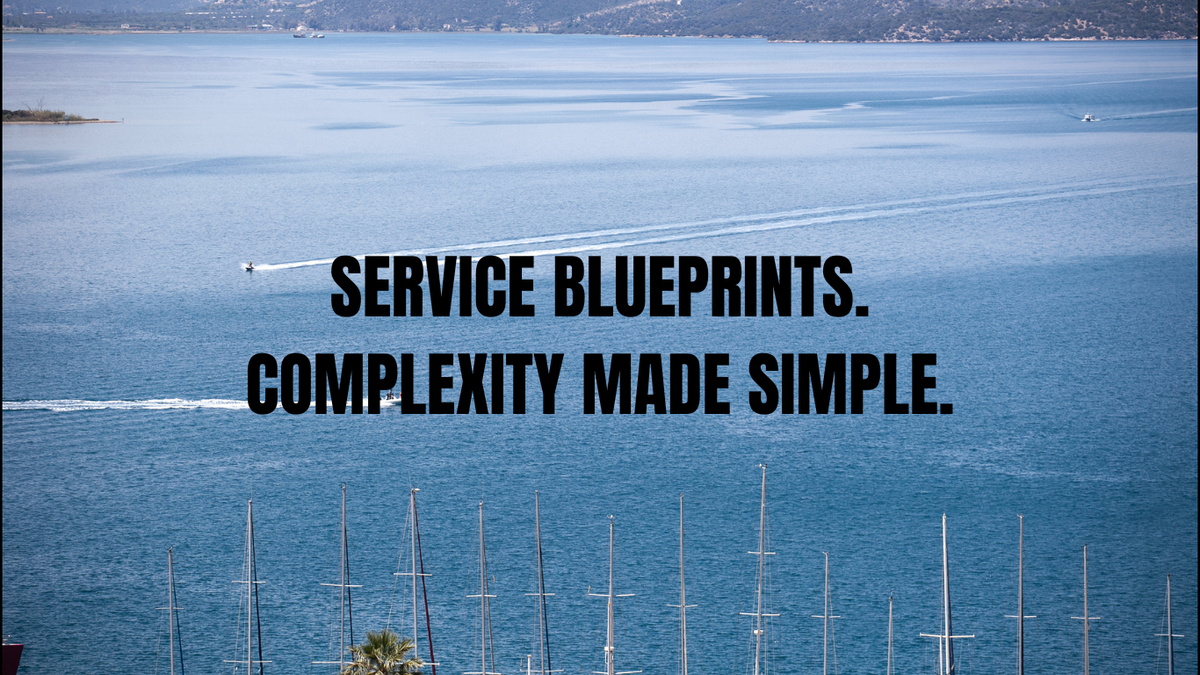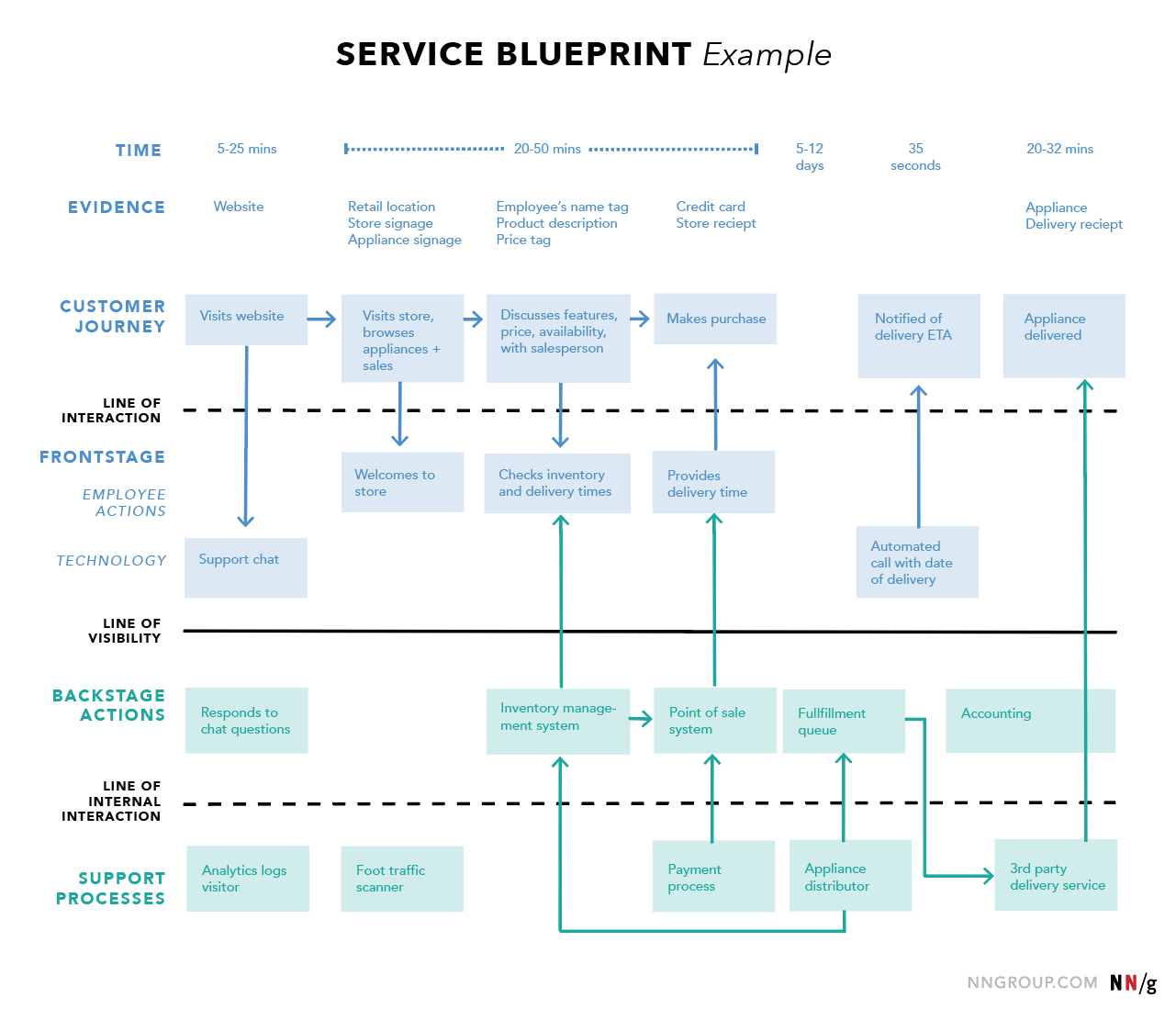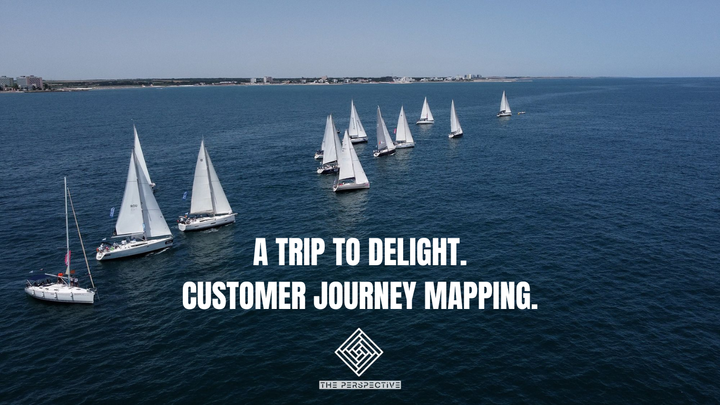Service Blueprints. Complexity made simple.
A service blueprint visualizes relationships between service components—people, props, and processes—directly linked to touchpoints in a customer journey. It's particularly useful for complex scenarios involving multiple touchpoints or requiring cross-functional coordination.

A service blueprint is a diagram that illustrates the interactions between various service elements within a customer journey. It extends beyond customer journey maps to include complex, multi-channel, and cross-functional services. Each blueprint corresponds to specific customer journeys and associated user goals, allowing for multiple blueprints for different scenarios within the same service.
Definition: A service blueprint visualizes relationships between service components—people, props, and processes—directly linked to touchpoints in a customer journey. It's particularly useful for complex scenarios involving multiple touchpoints or requiring cross-functional coordination.
Service blueprints are a tool used in service design, but very well applied by Product teams. It allows visualization and optimization of the processes involved in delivering products and services with great user experiences. Teams can identify inefficiencies, streamline operations, and improve both employee and customer experiences.

Why a Service Blueprint? They look so complex...
Service blueprints offer a comprehensive understanding of a product or service and its underlying resources and processes, both visible and invisible to the user.
Blueprints offer a holistic view of service delivery, making them strategic tools for planning and decision-making. They help you align on goals, identify improvement areas, and prioritize initiatives based on their overall service impact.
Key Elements of a Service Blueprint
- Customer Actions: Steps and interactions customers perform to achieve their goals
- Frontstage Actions: Visible actions performed by employees or technology interacting directly with the customer.
- Backstage Actions: Activities occurring behind the scenes to support frontstage actions.
- Processes: Internal steps and interactions supporting service delivery.
- Lines: Visual separators distinguishing different interaction levels.
- Evidence: Props and places are part of the service experience.
Service-Blueprinting are done via Workshops, not alone.
Service-blueprinting workshops require planning and hands-on facilitation. These workshops help organizations form a shared language and understanding of the experiences they provide. Additionally, the process of creating service blueprints forces holistic thinking and informs project planning. Service blueprints often have the greatest impact when created collaboratively.
You can use this process:

Choosing What Experience to Visualize in Service Blueprints
3 Levels of Scope
Service-blueprint scopes can be categorized into three levels: small, medium and large. Choosing the appropriate level of scope depends on your goals and the time available for creating the blueprint. Generally, a small-to-medium scope is best for gaining specific insights and identifying strengths and weaknesses within a focused experience.
Choosing an experience to evaluate
Choose experiences that require less research time, especially when starting with service blueprinting. Selecting familiar experiences with existing data can streamline the process.
Source




